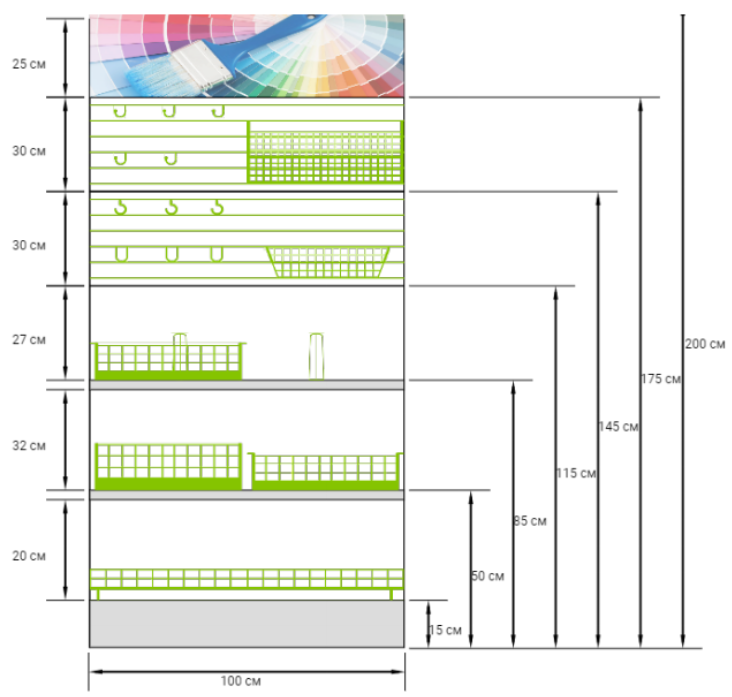Equipment designer
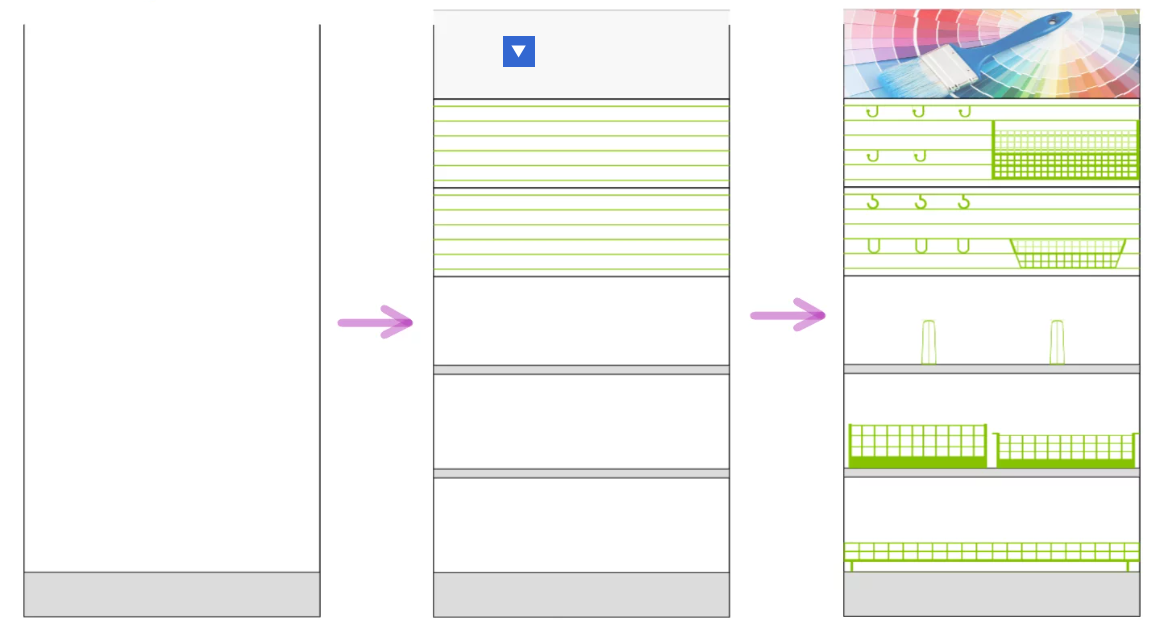
Commercial equipment: designing and specification
One of the most important modules of the service is the equipment designer, with the help of which the following tasks are solved:
1) Creation of a detailed procurement specification;
2) Preparation of a high-quality planogram. The designer draws types of shelves, attachments: hooks for goods with placement on the suspension, baskets, shelves, bars and etc;
3) Preparation of specifications for assembly in case of purchase of new equipment or adjustment of existing equipment (adding shelves, bars, etc.);
4) Accounting for existing shelving and its components.
Commercial equipment is structurally divided into three main blocks: these are frames, shelves and additional equipment. Accordingly, creating a shelving unit consists of three steps:
1) Creation of a detailed procurement specification;
2) Preparation of a high-quality planogram. The designer draws types of shelves, attachments: hooks for goods with placement on the suspension, baskets, shelves, bars and etc;
3) Preparation of specifications for assembly in case of purchase of new equipment or adjustment of existing equipment (adding shelves, bars, etc.);
4) Accounting for existing shelving and its components.
Commercial equipment is structurally divided into three main blocks: these are frames, shelves and additional equipment. Accordingly, creating a shelving unit consists of three steps:

The frame includes the side walls or posts, which set the basic dimensions of the rack: width, height
and depth. The image below shows an example of a frame (highlighted in red):
and depth. The image below shows an example of a frame (highlighted in red):
Frames
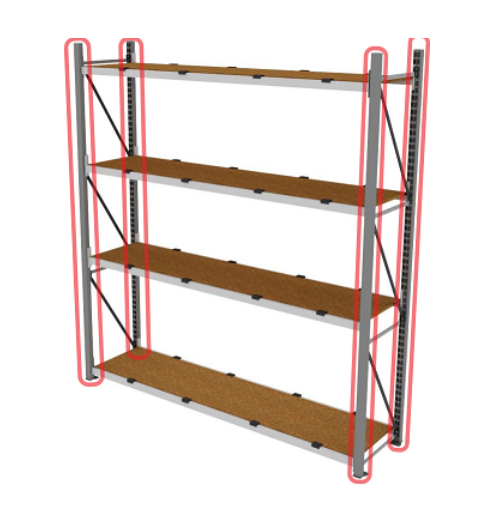
There are many different kinds of shelves, such as:
Regular shelf. Goods are arranged on it in a standard way.
Boom. Designed to place on it additional equipment: hooks, fronts, etc. When placing goods on it, they stick "from bottom to top".
Wall with perforation. Designed for placing hooks, baskets, shelves, etc. The horizontal and vertical pitch of perforation must be specified. When placing attachments on it, they are positioned according to the perforation holes.
Economy panel. It is intended for placing hooks, baskets, shelves, etc. The vertical spacing of the fastening slots must be specified.
Solid back wall. Can also be used to place advertising materials on it
Regular shelf. Goods are arranged on it in a standard way.
Boom. Designed to place on it additional equipment: hooks, fronts, etc. When placing goods on it, they stick "from bottom to top".
Wall with perforation. Designed for placing hooks, baskets, shelves, etc. The horizontal and vertical pitch of perforation must be specified. When placing attachments on it, they are positioned according to the perforation holes.
Economy panel. It is intended for placing hooks, baskets, shelves, etc. The vertical spacing of the fastening slots must be specified.
Solid back wall. Can also be used to place advertising materials on it
Shelves
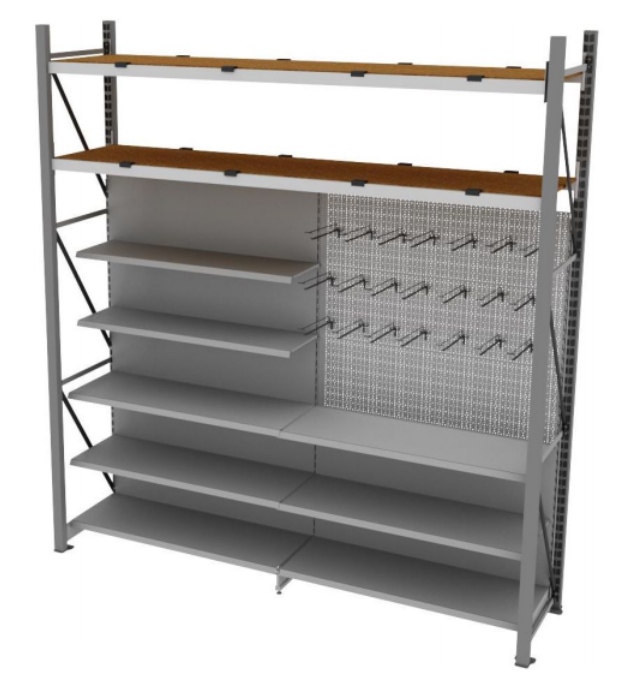
Optional equipment includes:
Hooks
Hangers
Baskets
Booms
Shelf dividers
Clothes hangers, etc.
Hooks
Hangers
Baskets
Booms
Shelf dividers
Clothes hangers, etc.
Additional equipment
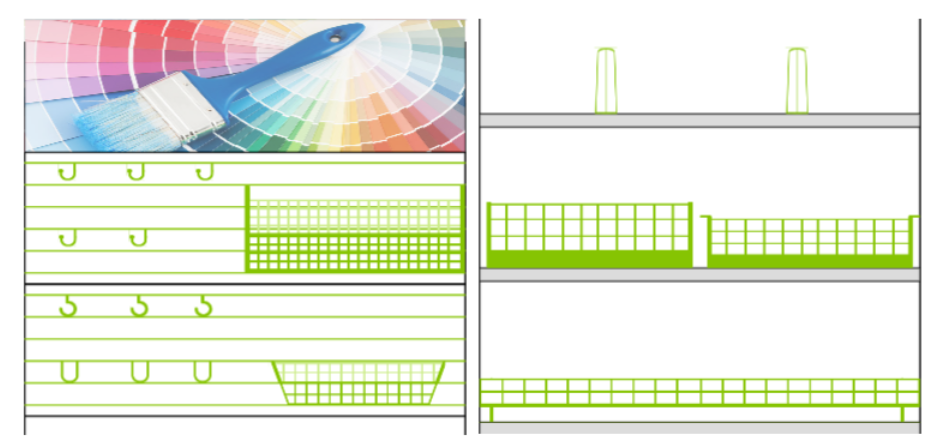
To assemble a shelving unit, you must create a new planogram and go to the "Constructor" tab (1). Then add one or more frames (2), place shelves (3) and additional equipment (4).
For each type of additional equipment the type of shelf for which it is intended is set.
For each type of additional equipment the type of shelf for which it is intended is set.
Assembling the rack in the designer
To form a specification for the assembly it is necessary for each element of the shelving unit to specify the components that make it up.
For example, the frame of the rack can have the following set of components:
1) L-shaped rack, 2m - 4 pcs.
2) Tie side racks connecting - 12 pcs.
3) Steel podium, 1m, height 15 cm - 1 pcs.
4) Bolt M6 - 32 pcs.
If such a set is specified for all elements of the rack, it becomes possible to prepare a specification for the order (or assembly) of the following type:
For example, the frame of the rack can have the following set of components:
1) L-shaped rack, 2m - 4 pcs.
2) Tie side racks connecting - 12 pcs.
3) Steel podium, 1m, height 15 cm - 1 pcs.
4) Bolt M6 - 32 pcs.
If such a set is specified for all elements of the rack, it becomes possible to prepare a specification for the order (or assembly) of the following type:
Specification
